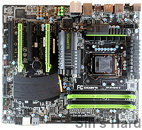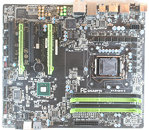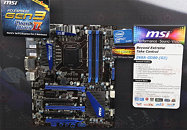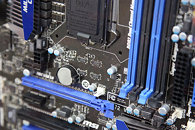
Intel Desktop Board Lineup for 2011-12 Disclosed
Here are some of the first motherboards by Intel's Desktop Board brand of consumer motherboards. Towards the end of 2011, Intel will release its Sandy Bridge-E high-end desktop platform. Like with the launch of any new chipset or desktop platform, Intel will have its Desktop Board products in place, that follow the chipset and branding specifications to the letter. With Sandy Bridge-E, Intel will launch two Extreme Series motherboards, the DX79SI and the DX79TO. In the second half of 2011, Intel will also launch a variety of Intel Atom boards, including one codenamed "Marshaltown".
Then in the first half of 2012, Intel will launch its next-generation 22 nm "Ivy Bridge" desktop processors in the LGA1155 package (compatible with Sandy Bridge). To back its launch, Intel will release a new chipset called Z77 Express. There will be no discrete graphics chipsets. H77 is the client desktop chipset that lacks overclocking features. Z77 has them, and support for Smart Response technology. Q77 adds a few enterprise management features. Intel's Z77 based motherboards include two Extreme series models, and two top-end Media Series models.
Then in the first half of 2012, Intel will launch its next-generation 22 nm "Ivy Bridge" desktop processors in the LGA1155 package (compatible with Sandy Bridge). To back its launch, Intel will release a new chipset called Z77 Express. There will be no discrete graphics chipsets. H77 is the client desktop chipset that lacks overclocking features. Z77 has them, and support for Smart Response technology. Q77 adds a few enterprise management features. Intel's Z77 based motherboards include two Extreme series models, and two top-end Media Series models.










